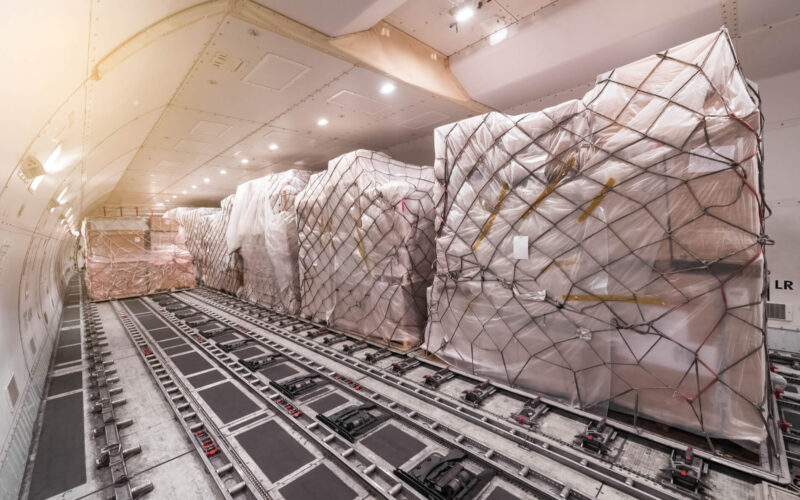Repetition aside, there are little-to-no words left to describe what kind of damage the current coronavirus-induced crisis has caused for the aviation industry. Seemingly, the world is about to turn the corner on COVID-19, as in the early morning hours on December 2, 2020, the United Kingdom approved a vaccine against the virus.
The Pfizer/BioNTech vaccine will be ready to roll out next week, according to the UK’s Medicines and Healthcare products Regulatory Agency (MHRA). With 40 million doses, the country will be ready to vaccinate over 20 million people in the coming months. However, the question is whether aviation is ready to distribute the vaccine.
“Currently, we are in what I would call a ‘perfect storm’ scenario,” remarked Neil Dursley, Chief Commercial Officer (CCO) of Chapman Freeborn, a company that specializes in aircraft charters, both cargo and passenger. “The challenge right now that the aviation industry is facing is planning,” added Dursley.
Seemingly, the aviation industry will have to play a key part in solving the problem that has almost choked it to a near state of asphyxiation. At the same time, the same problem has resulted in the distribution problem being exacerbated – as many aircraft were grounded due to lack of passenger demand, cargo capacity also went down due to the fact that large amounts of freight used to be carried in the bellies of passenger aircraft.
“Much of the world’s commerce travels in the bellies of passenger aircraft so the current demand for freighter capacity is enormous,” stated Dursley.
Capacity issues
The capacity challenge will need every airline contributing to the effort to distribute the vaccines.
“It really boils down to literally ‘all hands on deck’ to mobilize the global fleet of aircraft,” commented the executive of Chapman Freeborn. The International Air Transport Association (IATA) has noted that “providing a single dose to 7.8 billion people would fill 8,000 Boeing 747 cargo aircraft.” In its latest commercial market outlook for 2020-2039, Boeing outlined that the current global fleet of freighters stands at 2,010. A number much lower than 8,000, in addition to the fact that not all freighters are 747s. The plethora of cargo aircraft is wide and includes narrow-body jets like the Boeing 737-800 converted freighters that have a payload capacity of 20.7 tons, while the Boeing 747-8F has a payload capacity of 140 tons.
“There is nowhere close to that number of wide-body aircraft. The airlines with pure freighters will continue to be in very high demand and with that will come a surge in prices,” observed Dursley. The capacity challenge has been made more difficult with the grounding of the Volga-Dnepr Antonov An-124 aircraft, which has taken a large chunk of the global cargo capacity, he added. In total, Volga-Dnepr has 12 An-124s, each of which has a payload capacity of 120 tons.
“At the moment it is hard to tell about the timeframes, but the type will not be ungrounded until the final completion of the aviation incident investigation and the results,” in a statement to AeroTime News confirmed a Volga-Dnepr spokesperson.
While some vaccines can be transported by other means, including road, IATA remarked that “vaccines cannot be delivered globally without the significant use of air cargo.”
Airline preparedness
Transporting pharmaceuticals, including vaccines, has been nothing new to cargo operations. However, the sensitivity of some of the vaccines might provide an additional challenge to airlines and would require an extra layer of cooperation.
For example, American Airlines (A1G) (AAL) began conducting trial flights of transporting the vaccine from its Miami International Airport (MIA) hub to South America in mid-November 2020. “While the situation will be unique, the task is not new to American — the airline’s cargo operation has been shipping life-saving medicine for more than eight decades,” the carrier’s statement read.
United Airlines also had done the same, as it operated a special charter flight from Brussels, Belgium to Chicago O’Hare International Airport (ORD) to ship the Pfizer vaccine before its approval in order to distribute it more quickly, reported the Wall Street Journal. The flights required special approval from the Federal Aviation Administration (FAA) since they packed a higher amount of dry ice than is usually allowed.
In order to make the process much smoother, the United States Department of Transportation (DoT) “has s established the appropriate safety requirements for all potential hazards involved in shipping the vaccine, including standards for dry ice and lithium batteries,” read the DoT’s press release, issued on December 1, 2020.
Another example could be that Emirates airline established its own Good Distribution Practice (GDP) cargo hub, primarily focused on delivering and re-distributing the COVID-19 vaccine in Dubai, the United Arab Emirates, in October 2020.
“Many airlines and other companies are ready to support this global logistics requirement and are upgrading facilities, testing ‘sky cells’ and the so-called envirotainers,” commented Dursley. Once vaccines reach their destination, they will have to be off-loaded and go into warehouses that have the capabilities to store them. As they are being prepared to be transported, the whole “supply chain will need to work together,” he added.
“Many airlines across the world are Center of Excellence for Independent Validators (CEIV) accredited and are highly familiar with moving the vaccine. The supply chain has been investing in infrastructure and resources for decades,” concluded Dursley.
Still, airlines have to battle a lot of uncertainty when planning their operations. While under normal circumstances there are operators that are certified to carry pharmaceuticals, these are not normal times and the scale of the task does not resemble any sense of normality.

